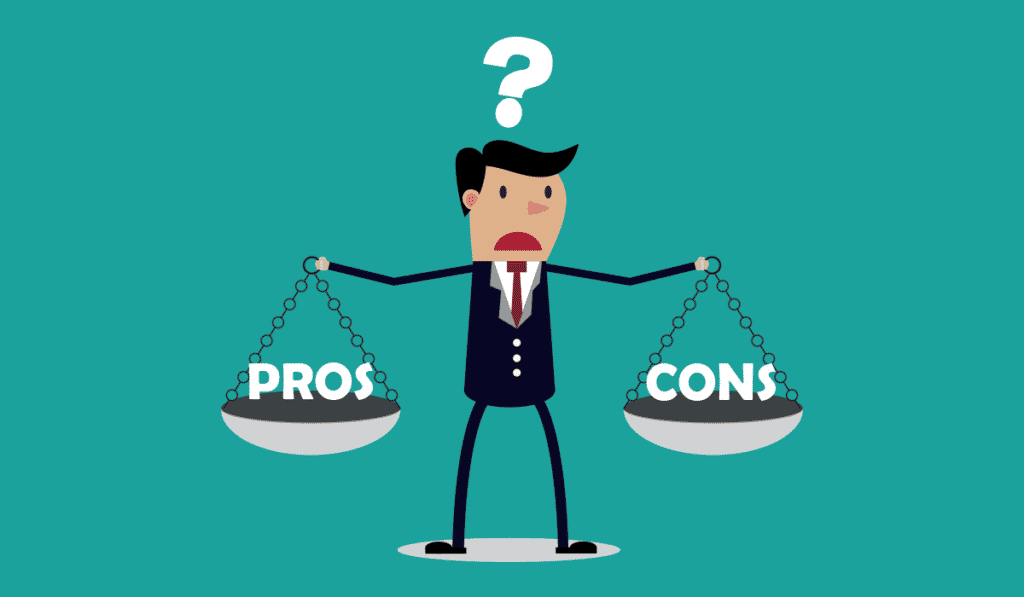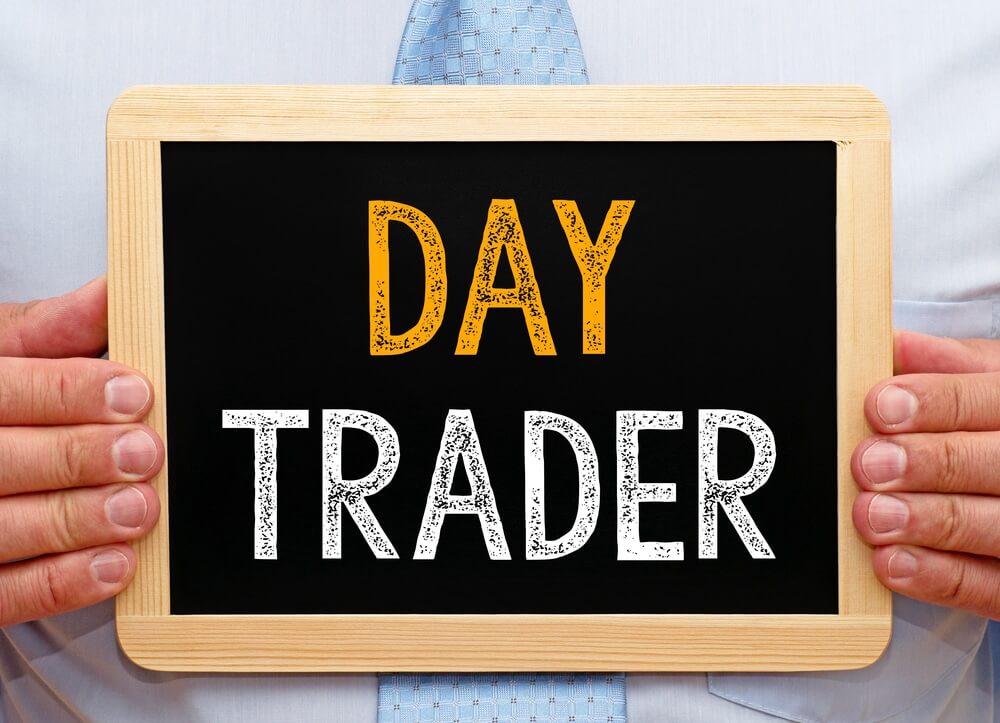
Pros and Cons of Day Trading: Is there a downside?
Have you ever wondered what the day trading pros and cons are? As someone interested in trading and who has discovered this short-term strategy, you are undoubtedly interested in the excellent and wrong sides of dealing with it.
Suppose you want to start your long-awaited trading career and your biggest goal is to make huge profits in a specific time frame. Also, you are most attracted to the day trading strategy.
Don’t worry. You’re not the only one. Many beginners, hungry for the profit they want to get as soon as possible, decide to master the day trading strategy. They want to know absolutely everything they can about it.
But before we give you all the day trading pros and cons below, you must first learn all the basics of the Day Trading Strategy itself!
What is a Day Trading Strategy?
Day trading represents perhaps the most popular short-term trading strategy nowadays. It involves purchasing and selling financial assets or instruments to close the positions within the same trading day, i.e. 24 hours and profiting from small movements in price.
Technology, in general, has played an enormous part in this. Thanks to great mobile connections and fast broadband, a wealth of real-time market information is just a click away. Accessibility has led to more and more individuals accessing the markets via day trading, i.e. placing trades within 24 hours for profiting from volatility as market prices go up and down.
How do traders use technical analysis for day trading?
Many day traders utilize technical analysis by analyzing price charts, just like candlestick charts that show reversals and trends in which candlesticks usually denote prices. These traders would recommend everyone to have a “clean approach” to their trading strategies before even thinking about day trading pros and cons, for instance.
Day traders usually don’t prefer loading their charts with numerous indicators to second guess direction. Instead of that, day traders will stick to the price itself. This situation is widely known as “price action trading”.
If you trade this way, remember that you’ll have some key reference points based on what has happened before to help you plan better future trades.
What’s crucial to know when planning a day strategy?
When planning a strategy for one particular day, besides knowing the pros and cons to day trading, it’s essential to watch the previous day’s highs and lows. It’s logical for the following reasoning: Yesterday’s high managed to mark the point where the sellers and sentiment came back into the market, pushing the price lower.
Thus, the market consensus was that the price was too high. So, the previous day’s low represents where buyers recovered their self-confidence, as they saw the market was undervalued. So, traders voted with their wallets and bought.
Remember that all these levels could be crucial if they come into play again and provide the foundation of a day trading strategy.
The most popular day trading strategies
To understand all the possible pros and cons of a day trading strategy, it’s crucial to know its essentials. One of these essential things is knowing what the most popular and, thus, essential day trading strategies traders usually go for are.
Here are the top four-day trading strategies you should consider:
- Scalping strategy refers to a specific trading style specializing in profiting off small price changes and making a fast profit from reselling. Regarding day trading, scalping is a term that describes a strategy to prioritize making high volumes of small profits.
- Trend following strategy – It is a strategy where trend traders analyze the direction of trends for financial instruments. Once a particular asset is watching an upward trend, traders often look to enter into an extended position and buy. If the trend direction is downward, traders would go short and sell.
- Momentum trading strategy: It represents a strategy in which investors purchase securities that are rising at the moment and then sell them once they look to have peaked. The primary goal is to work with volatility by looking for buying opportunities in short-term uptrends and then selling them when the securities lose momentum.
- Mean reversion strategy: It represents a financial theory suggesting that asset prices aim to return to average levels right after extreme price moves. Routinely, prices do oscillate around the mean or average price. However, they tend to return to that same average price over and over.
What are the main characteristics of day traders?
When it comes to professional day traders who trade for a living rather than as a hobby, they are typically well established in the field. They have an in-depth understanding of the marketplace and all the best day trading strategies.
These traders use only risk capital they can afford to lose. Besides protecting them from financial ruin, this practice also helps eliminate emotion from their trading. They are highly skilled in technical analysis and chart reading, and they usually use several different day trading strategies, refining them until they produce consistent profits and effectively limit losses.
What are day trading pros and cons?

Like anything in this world has its pros and cons day trading also includes several reasons why it is a good and bad idea for traders. In the next paragraph, you will learn the most common day trading pros and cons you should be aware of before starting your day trading journey. Are you ready?
Pros of day trading
According to advanced technology, day traders can trade from home, an office, or even when they are traveling. The best part of day trading is that these traders can be their bosses. Besides all that, other benefits of day trading are:
- Potentially Enormous Profits – Successful day traders can be highly lucrative and turn a quick profit. So, if they learn how to master day trading, they can become extremely wealthy and stay for the long run in the market.
- Independence – As mentioned above, day traders are their bosses, able to work from where they want and when they want. Numerous day traders are self-employed, working alone and answerable to no one.
- Euphoria – When earning profits as a day trader can lead to unimaginable emotional highs. Many traders do day trading for that exhilarating feeling.
- Status – There’s almost a mythical status in some communities, similar to the legendary “fast guns” of the Old West. These are known as iconic outsiders living by their own rules and thus making huge profits.
But is there a downside to day trading? And if so, what is it? Let’s see what are the cons of day trading, shall we?
Cons of day trading
Like any other investing style, day trading also has its cons and risks. Keep in mind that when you day trade, you’re accepting a higher level of risk due to the short time frame associated with the process. Here are the downfalls you should know:
- Volatility – It is almost impossible to predict where prices will move from minute to minute or hour to hour, which can be a big problem for serious day traders in the long run.
- Margin risks – Margins are tools traders often use, but they’re a double-edged sword. Those who use margins to increase their buying power are at risk by purchasing stock with borrowed money. So, if the trade goes badly, they need to pay that money back either way.
- Higher tax burden – Keep in mind that returns on investments held for less than a year will be taxed at the same rate as ordinary income. So, short-term profit from day trading faces a higher tax rate than profits from long-term investments.
- Psychological addiction – Day trading could lead to potential psychological addiction. If addicted, there are inevitable consequences you might experience, especially while trading with the borrowed money you must not afford to lose. Be careful!
Pros and cons of day trading crypto
Besides the general day trading pros and cons, it’s always good to know the pros and cons of day trading crypto.
Pros of day trading crypto
Day trading in the crypto market is incredibly profitable because cryptocurrencies can be volatile. So, massive volatility is an excellent opportunity to make quick profit day trading cryptocurrencies.
As a result, crypto day trading is, without a doubt, the most extensively used strategy across all financial markets, including commodities, stock, Forex, and crypto markets.
Cons of day trading crypto
Perhaps the biggest con of day trading crypto is that there aren’t set hours for markets to trade. Therefore, traders may not have consistent breaks or hours while investing in crypto futures contracts on different exchanges globally.
Pros and cons of day trading stocks
Another thing essential to know besides the day trading pros and cons is to learn the pros and cons of day trading stocks.
Pros of day trading stocks
One of the biggest pros for day trading stocks is a reasonable volume. Day traders usually like stocks since they are highly liquid. It means that they often trade in high volume. What liquidity allows traders is to buy and sell without impacting the price much. Currency markets are also known as highly liquid markets.
Cons of day trading stocks
Remember that day trading usually requires substantial investment in what’s known to be trading step-ups. Thus, traders typically compete with hedge funds, high-frequency traders and other professionals in the market who spend millions of dollars to gain trading advantages.
Conclusion
Regardless of the day trading pros and cons, what every future trader is interested in when this strategy is achieved is that tremendous success is achieved through perseverance, constant education, exercises and learning from previous mistakes.
To achieve a long-term and successful day trading career, you must have discipline, a competitive spirit and a huge motivation to make big profits. Because if you have the desire to “just try”, you won’t get far! You need to convince yourself that you will be one of the best day traders on the market and set your mind to it! Good luck!




